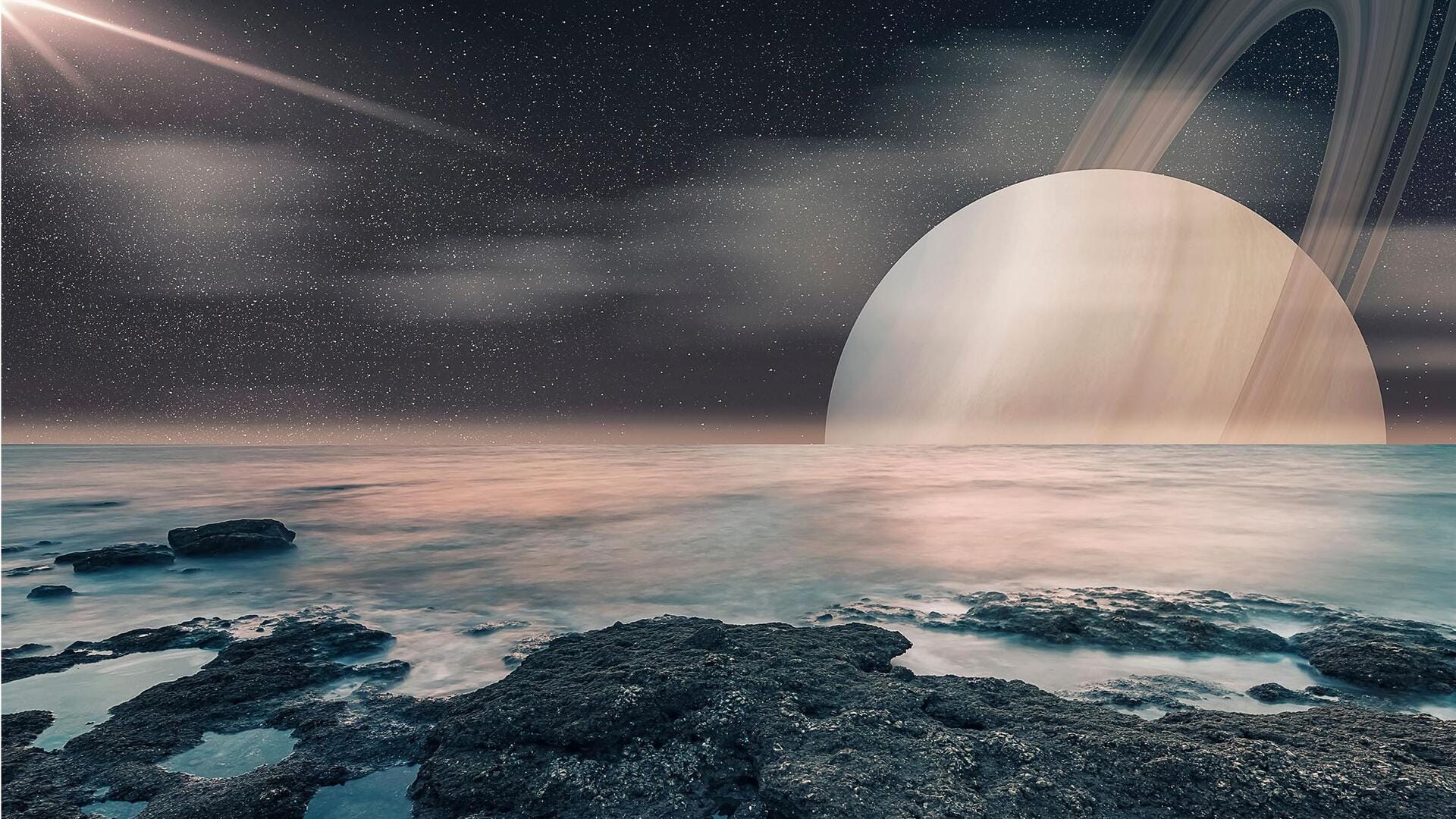
Could Saturn's moon Titan host life? Study reveals surprising findings
What's the story
Saturn's largest moon, Titan, has long intrigued scientists with its dense atmosphere, surface lakes of liquid methane, and soot-like "sand" dunes.
Now, an international research team led by Antonin Affholder from the University of Arizona and Peter Higgins from Harvard University has delved into the possibility of life on this mysterious moon.
Their findings suggest that Titan's subsurface ocean could harbor simple microbial organisms.
Life potential
Research team employed bioenergetic modeling to study Titan's ocean
The research team employed bioenergetic modeling to study Titan's subsurface ocean, which is believed to be some 480km deep.
Their study, published in The Planetary Science Journal, indicates that this ocean could harbor life forms that feed on organic material.
However, they determined that while Titan could theoretically host simple microscopic life forms, it would probably only support a small amount of biomass overall.
Unique feature
Titan's unique organic content sets it apart
"There has been this sense that because Titan has such abundant organics, there is no shortage of food sources that could sustain life," Affholder said.
This unique feature has made Titan a target for future exploration through NASA's Dragonfly mission.
He, however, called for a more nuanced approach, saying not all organic molecules may be food sources, and there's little exchange between the ocean and surface where these organics are found.
Metabolism
Fermentation: A potential metabolic process for Titan
The research team proposed a "back-to-basics" approach, focusing on fermentation as a potential metabolic process for life on Titan.
This biological process only requires organic molecules and no oxidant such as oxygen, unlike other metabolic processes such as respiration.
Affholder stated, "Fermentation probably evolved early in the history of Earth's life... We asked, could similar microbes exist on Titan?"
Key molecule
Glycine: The key to microbial life on Titan
The scientists examined glycine—the simplest amino acid—as a potential energy source for hypothetical microbes in Titan's subsurface ocean.
However, their simulations showed that only a small share of the moon's abundant organic material would be usable by such organisms.
According to Affholder, microbes relying on glycine would need a steady supply from the surface, delivered through Titan's thick ice crust.
Occasional meteorite impacts might enable this transfer by forming temporary melt pools that ferry surface compounds into the ocean below.
Biosphere
Tiny biosphere: A glimpse into Titan's potential
The research team concluded that the supply of glycine may only be enough to sustain a very small population of microbes weighing a total of only a few kilograms at most.
This tiny biosphere would average less than one cell per liter of water over Titan's entire vast ocean.
Affholder stated, "Our new study shows that this supply may only be sufficient to sustain a very small population."